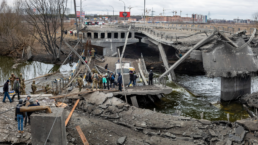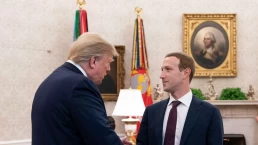There’s a disconnect between Western leaders’ increasingly hawkish public discourse and the quiet consensus among their military experts that any armed encounter with Russia would likely end in a nuclear catastrophe.
By Branko Marcetic, Jacobin
It all starts with a warning shot. Moscow, looking uneasily at the advance of US-NATO forces, tries a desperate Hail Mary to stop them in their tracks, firing a nuclear missile from Kaliningrad that lands on the border of Poland, Germany, and Czechia. It has the opposite effect. Soon, a German tactical nuclear air strike hits the Russian exclave in response.

Now over the nuclear threshold, both sides launch hundreds of warheads at the other, a “tactical” nuclear war leaving virtually all of Europe and swathes of Russia annihilated. Before long, with minutes to act and with both sides enveloped in the fog of nuclear war, many more hundreds of US and Russian warheads fly across oceans and continents in an inadvertently suicidal attempt to prevent further destruction and stop the other side from recovering and renewing its offensive. In just a few hours, Europe, Russia, and the United States are in ruins, thirty-four million are dead, and fifty-seven million are injured. The survivors face an irradiated future without any modern infrastructure, easily accessible food or medical supplies, and a years-long nuclear winter.
This was the outcome gamed out in 2019 by researchers at Princeton University’s program on Science and Global Security (SGS), who, alarmed by deteriorating US-Russia relations and nuclear arms build-ups by each, drew on data and information about Russian and US nuclear force postures, war plans and targets, and warhead deployments and yields to predict just what exactly a nuclear war between Russia and NATO would look like. The answer wasn’t pretty.
Yet experts warn that this scenario is now a real possibility — far more real than most Americans likely realize.
Recent Posts
“Arrest Now, Ask Questions Later”: Why Did L.A. ICE Agents Arrest and Jail U.S. Citizen Andrea Velez?
July 3, 2025
Take Action Now “They didn’t have vests that said ICE or anything. Their cars didn’t have license plates. … Just because of the color of our…
Trump’s Big, Beautiful Bill Is Naked Class War
July 3, 2025
Take Action Now Trump’s “Big, Beautiful Bill” trades tax cuts on millionaires for the dissolution of society.By Hamilton Nolan, In These Times…
Mayor Mamdani’s First Day, A Zero Hour Conversation With Richard Wolff
July 2, 2025
Take Action Now If elected, what would Mayor Mamdani do on his first day in City Hall? How would a democratic socialist govern as a big-city mayor?……
The U.S. Is Funding A Bloodbath At Gaza Aid Centers
July 2, 2025
Take Action Now The admin just gave $30M to GHF, the organization at the center of charges that Israel is weaponizing assistance and shooting at…




